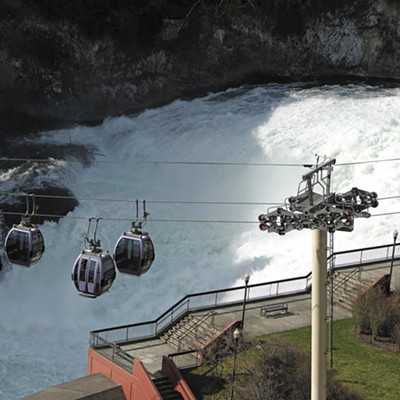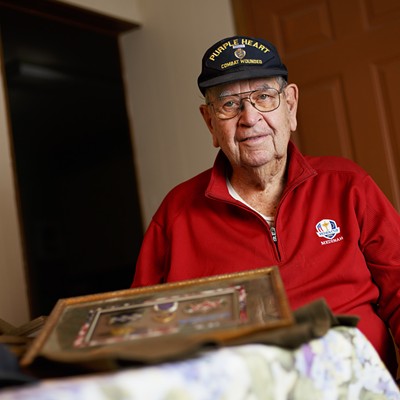By the Numbers
[
{
"name": "Broadstreet - Instory",
"insertPoint": "5",
"component": "25846487",
"requiredCountToDisplay": "5"
},{
"name": "Broadstreet - Instory",
"insertPoint": "10",
"component": "25846487",
"requiredCountToDisplay": "10"
},{
"name": "Broadstreet - Instory",
"insertPoint": "15",
"component": "25846487",
"requiredCountToDisplay": "15"
},{
"name": "Broadstreet - Instory",
"insertPoint": "20",
"component": "25846487",
"requiredCountToDisplay": "20"
}
]
by Robert Herold
Election 2004 was hardly a dead heat, but it wasn't statistically decisive either. Bush's 3.5 million-vote win over Kerry was the fourth-closest popular vote win since the election of 1952. Only Kennedy in 1960, Carter in 1976 and Gore in 2000 came away with smaller popular vote leads. By contrast, Clinton defeated Bob Dole by 8.5 million, Bush I defeated Dukakis by 7 million, and Reagan blew away Mondale by 17 million. Those were statistically decisive elections.
When we look at the electoral votes, Election 2004 seems even less decisive. In 1960, for example, Kennedy's razor-thin popular vote advantage of just over 100,000 votes somehow translated into an 84-vote margin in the Electoral College. Bush's 3.5 million popular vote advantage in 2004 translates into only a 34-vote win. Viewed through the Electoral College lens, this was a close election. Except for 2000, you have to go back to 1916 to find a closer one, and before that to the tainted election of 1876.
And regarding the popular vote, while Bush did better across a wide range of demographic categories, he didn't do that much better. The 11 states of the old Confederacy provided Bush with a 5 million-vote advantage. The other 39 states gave Kerry a 1.5 million-vote advantage.
While the professional number crunches will be arguing over all the statistical nuances for months, at the macro-level some results are beyond a doubt. First, to keep things in perspective, had just 70,000 people in Ohio changed their minds, Kerry would be president-elect -- and instead of chewing over the Democrats and "soul searching," we would be talking about where Karl Rove went wrong and why it was just awful that the popular-vote winner didn't win the election. Second, Bush won Ohio because of "God, gays and guns" -- to assert otherwise, you have to ignore everything we know about how Rove orchestrated his campaign in the rural areas and small towns.
The obvious, if painful, truth is that while apparently Bush polled a slightly higher percentage of college graduates nationwide, the states that voted for Kerry are the states that have the highest education levels; the states that supported Bush, the lowest. Eight of the top 10 states in "Percent of people with four years or more of college education" went for Kerry. Twenty of the bottom 25 states on that same scale supported Bush. Overall, the Kerry states are home to people who enjoy better health care, have better jobs, live longer, produce more, pay more taxes, smoke much less, read more and worry about the environment. Not to be overlooked, the Bush states, by and large, are much more heavily subsidized by the federal government, even as voters in these states often call for "smaller government."
Republicans of the "decisive victory" school of thought draw attention to the many more counties across the country that Bush won. That's true. At present here in Washington state, for example, Chris Gregoire leads in only seven counties, while Dino Rossi is ahead in 34. The "decisives" use this to conclude that Republicans have a broader base of support, which they do -- broad, but thin.
Cities across the country supported Kerry. And don't stop with our large metropolises. Kerry won all the medium-sized cities, too. In Iowa, for example, Kerry won in Cedar Rapids, Des Moines and Davenport. These aren't cities with major race and ethnic problems, not even much in the way of lifestyle cleavages. They share with the New Yorkers "urbanity." Bush did very badly with the urban voters.
Pat Buchanan, he of the "decisive" school, snorted that even in Kerry's urban areas, the "taxpayers" voted Republican (which would come as a surprise to all those six-figure income folks in lower Manhattan who voted for Kerry by upwards of 80 percent). And it is true that America's suburbs have voted Republican since Ike showed in 1952 that cities and suburbs are different voting blocks. The more affluent, the more likely is support for the GOP. Bellevue comes to mind. But voters in these more upscale suburbs, certainly outside the South, typically demand moderate, even liberal, Republican candidates. The "God, guns and gays" issues don't go down well.
And on a "pietistic-secular" scale, you could not confuse Bellevue with, say, anywhere in rural southern Ohio. If my urban-rural thesis is correct, as urban problems envelop our bedroom suburbs, Democrats may gain ground. Evidence suggests the emergence of this pattern. For example, to no surprise, Kerry wins in Multnomah County, Ore., with more than 71 percent of the vote. But he also does very well along the Highway 26 suburban corridor that leads through Beaverton to the boutique northern beach communities. In fact, Kerry wins along the affluent northern Oregon Coast all the way down to Lincoln City. He also wins in Hood River, a smallish but highly urbanized community to the east along the Columbia River.
What does this mean? At the very least, it suggests that affluence, suburban living and tax-cutting are no longer nearly the accurate indicators of support for the Republican Party that they once were. Now it appears to be more about "God, gays and guns," insularity, rural roots and the South.
Publication date: 11/11/04
Election 2004 was hardly a dead heat, but it wasn't statistically decisive either. Bush's 3.5 million-vote win over Kerry was the fourth-closest popular vote win since the election of 1952. Only Kennedy in 1960, Carter in 1976 and Gore in 2000 came away with smaller popular vote leads. By contrast, Clinton defeated Bob Dole by 8.5 million, Bush I defeated Dukakis by 7 million, and Reagan blew away Mondale by 17 million. Those were statistically decisive elections.
When we look at the electoral votes, Election 2004 seems even less decisive. In 1960, for example, Kennedy's razor-thin popular vote advantage of just over 100,000 votes somehow translated into an 84-vote margin in the Electoral College. Bush's 3.5 million popular vote advantage in 2004 translates into only a 34-vote win. Viewed through the Electoral College lens, this was a close election. Except for 2000, you have to go back to 1916 to find a closer one, and before that to the tainted election of 1876.
And regarding the popular vote, while Bush did better across a wide range of demographic categories, he didn't do that much better. The 11 states of the old Confederacy provided Bush with a 5 million-vote advantage. The other 39 states gave Kerry a 1.5 million-vote advantage.
While the professional number crunches will be arguing over all the statistical nuances for months, at the macro-level some results are beyond a doubt. First, to keep things in perspective, had just 70,000 people in Ohio changed their minds, Kerry would be president-elect -- and instead of chewing over the Democrats and "soul searching," we would be talking about where Karl Rove went wrong and why it was just awful that the popular-vote winner didn't win the election. Second, Bush won Ohio because of "God, gays and guns" -- to assert otherwise, you have to ignore everything we know about how Rove orchestrated his campaign in the rural areas and small towns.
The obvious, if painful, truth is that while apparently Bush polled a slightly higher percentage of college graduates nationwide, the states that voted for Kerry are the states that have the highest education levels; the states that supported Bush, the lowest. Eight of the top 10 states in "Percent of people with four years or more of college education" went for Kerry. Twenty of the bottom 25 states on that same scale supported Bush. Overall, the Kerry states are home to people who enjoy better health care, have better jobs, live longer, produce more, pay more taxes, smoke much less, read more and worry about the environment. Not to be overlooked, the Bush states, by and large, are much more heavily subsidized by the federal government, even as voters in these states often call for "smaller government."
Republicans of the "decisive victory" school of thought draw attention to the many more counties across the country that Bush won. That's true. At present here in Washington state, for example, Chris Gregoire leads in only seven counties, while Dino Rossi is ahead in 34. The "decisives" use this to conclude that Republicans have a broader base of support, which they do -- broad, but thin.
Cities across the country supported Kerry. And don't stop with our large metropolises. Kerry won all the medium-sized cities, too. In Iowa, for example, Kerry won in Cedar Rapids, Des Moines and Davenport. These aren't cities with major race and ethnic problems, not even much in the way of lifestyle cleavages. They share with the New Yorkers "urbanity." Bush did very badly with the urban voters.
Pat Buchanan, he of the "decisive" school, snorted that even in Kerry's urban areas, the "taxpayers" voted Republican (which would come as a surprise to all those six-figure income folks in lower Manhattan who voted for Kerry by upwards of 80 percent). And it is true that America's suburbs have voted Republican since Ike showed in 1952 that cities and suburbs are different voting blocks. The more affluent, the more likely is support for the GOP. Bellevue comes to mind. But voters in these more upscale suburbs, certainly outside the South, typically demand moderate, even liberal, Republican candidates. The "God, guns and gays" issues don't go down well.
And on a "pietistic-secular" scale, you could not confuse Bellevue with, say, anywhere in rural southern Ohio. If my urban-rural thesis is correct, as urban problems envelop our bedroom suburbs, Democrats may gain ground. Evidence suggests the emergence of this pattern. For example, to no surprise, Kerry wins in Multnomah County, Ore., with more than 71 percent of the vote. But he also does very well along the Highway 26 suburban corridor that leads through Beaverton to the boutique northern beach communities. In fact, Kerry wins along the affluent northern Oregon Coast all the way down to Lincoln City. He also wins in Hood River, a smallish but highly urbanized community to the east along the Columbia River.
What does this mean? At the very least, it suggests that affluence, suburban living and tax-cutting are no longer nearly the accurate indicators of support for the Republican Party that they once were. Now it appears to be more about "God, gays and guns," insularity, rural roots and the South.
Publication date: 11/11/04


















